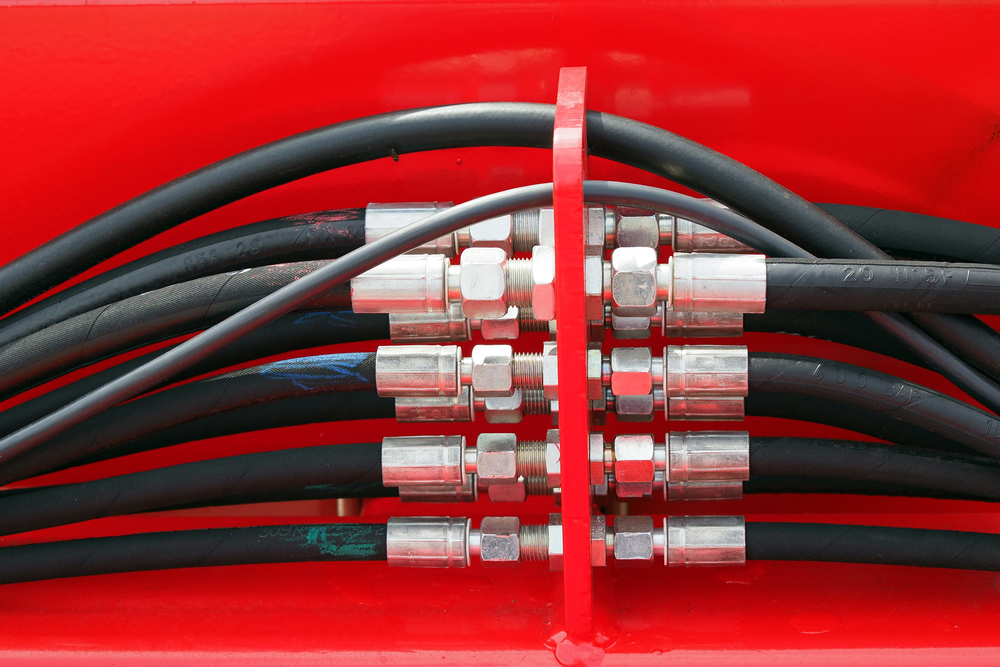
3 Common Hydraulic Tube Failures to Avoid
Hydraulic systems are integral to industries ranging from agriculture to construction. Their reliability often depends on the durability of hydraulic tubes, hoses, and components like hydraulic fittings. However, even the best systems can encounter failures that lead to costly downtime, expensive repairs, and safety risks. In this blog, we’ll explore three common hydraulic tube failures and how to avoid them, ensuring your system operates efficiently with minimal interruptions.
Understanding the Importance of Hydraulic Tubes
Hydraulic tubes and hoses serve as the lifeline of hydraulic systems. They transfer pressurized fluid to various components, powering machinery and enabling precise operations. The efficiency of these systems depends on robust tubing, reliable hydraulic fittings, and a well-maintained custom hydraulic hose assembly.
While hydraulic systems are designed for durability, improper maintenance, installation, or environmental factors can lead to tube failures. These failures can cause serious disruptions, so understanding their root causes is essential for prevention.
Common Hydraulic Tube Failures
Failure #1: Abrasion Damage
Abrasion is one of the leading causes of hydraulic tube failure. Hydraulic tubes often operate in harsh environments with constant exposure to friction, sharp edges, and abrasive materials. Over time, these conditions can wear down the tube’s outer surface, compromising its structural integrity.
Causes of Abrasion
- Proximity to moving parts or sharp edges in machinery.
- Inadequate protective coverings or routing.
- Operating in environments with debris or abrasive particles.
Prevention Strategies
- Protective Sleeves and Guards: Install sleeves or spiral wraps around hydraulic tubes to shield them from abrasion.
- Proper Routing: Ensure that tubes are routed away from sharp edges and moving components. Use clamps to secure tubes in place and prevent unnecessary movement.
- Custom Hydraulic Hose Solutions: Opt for custom hydraulic hose assemblies with abrasion-resistant coatings tailored to your specific application.
Failure #2: Improper Hydraulic Fittings and Connections
Hydraulic fittings are critical for connecting hoses and tubes within the system. Faulty or improperly installed fittings can lead to leaks, pressure loss, and eventual tube failure. This issue often stems from mismatched fittings, over-tightening, or poor-quality components.
Causes of Fitting-Related Failures
- Use of incompatible or non-standard fittings.
- Improper installation, such as cross-threading or over-tightening.
- Corrosion or wear in fittings over time.
Prevention Strategies
- Choose High-Quality Fittings: Always use standard or custom hydraulic fittings that are compatible with your system’s specifications.
- Ensure Proper Installation: Follow manufacturer guidelines for torque specifications and installation procedures. Using a torque wrench can help achieve the correct tightness.
- Regular Inspections: Routinely check for signs of wear, corrosion, or leaks around fittings and replace damaged components promptly.
Failure #3: Overheating and Fluid Degradation
Hydraulic systems generate heat during operation, and excessive heat can degrade the fluid inside the tubes. Overheated hydraulic fluid can reduce the effectiveness of the system, weaken tube materials, and lead to premature failure.
Causes of Overheating
- Insufficient cooling or ventilation in the system.
- Excessive pressure or workload beyond the system’s capacity.
- Use of low-quality or incorrect hydraulic fluid.
Prevention Strategies
- Optimize Cooling Systems: Ensure proper cooling mechanisms, such as heat exchangers or fans, are in place to manage system temperature.
- Monitor Fluid Quality: Use high-quality, manufacturer-recommended hydraulic fluid. Regularly check for signs of fluid degradation, such as discoloration or a burnt smell.
- System Design Considerations: Work with experts to design a hydraulic system that matches your operational demands, including custom hydraulic hose solutions that can handle specific temperature ranges.
How to Minimize Hydraulic Tube Failures
Regular Maintenance
Routine maintenance is crucial for extending the lifespan of hydraulic tubes. Create a schedule to inspect tubes, hoses, and hydraulic fittings for wear, leaks, or damage. Replace worn components promptly to prevent cascading failures.
Use Custom Hydraulic Hose Assemblies
Standard hydraulic hoses may not always meet the unique demands of your application. A custom hydraulic hose assembly ensures a perfect fit and optimal performance. Custom options often include enhanced abrasion resistance, higher pressure ratings, and temperature-specific materials.
Training and Awareness
Educating your team about proper hydraulic system operation and maintenance is key to avoiding common failures. Provide training on identifying early signs of tube wear, inspecting hydraulic fittings, and adhering to safe operating practices.
Why Prevention Matters
Avoiding hydraulic tube failures not only saves costs on repairs and downtime but also enhances the safety of your operations. A burst hydraulic tube can lead to dangerous fluid leaks, putting both personnel and equipment at risk. Proactive measures like proper installation, regular inspections, and choosing reliable components can mitigate these risks effectively.
Choosing the Right Components for Your System
When it comes to hydraulic systems, the quality of components matters. Whether it’s hydraulic fittings or custom hydraulic hose assemblies, investing in durable, high-performance materials is a cost-effective way to prevent failures.
- Hydraulic Fittings: Opt for corrosion-resistant, precision-engineered fittings to ensure leak-free connections.
- Custom Hydraulic Hose Assemblies: Work with a trusted supplier to design hoses that meet your system’s exact requirements, from pressure ratings to environmental resistance.
Conclusion
Hydraulic tube failures can cause significant disruptions, but they’re often avoidable with the right strategies. By understanding the causes of abrasion damage, fitting-related failures, and overheating, you can take proactive measures to keep your hydraulic system running smoothly.
Invest in high-quality components like hydraulic fittings and custom hydraulic hose assemblies, and prioritize regular maintenance to minimize downtime and extend the lifespan of your equipment. Prevention is always better than cure, and with these tips, you’ll be well-equipped to avoid common hydraulic tube failures in your operations.
Royal Brass Incorporated
Welcome Royal Brass Incorporated! We are your 3rd generation, family-owned, local hose supplier! Our family has dedicated our services to supplying northern California with all types of hoses, fittings, flanges, regulators, valves, adapters, and gauges. We pride ourselves on having the most extensive inventory in northern California. Our inventory ensures that we can fix most products on site, the same day. Here at Royal Brass Incorporated, we only hire qualified individuals who are trained in factory sales. Our fully stocked warehouses ensure that we can fill your hydraulic and pneumatic hose, tubing, and fitting needs on time, every time. High-quality customer service is our goal and has been since 1952. Stop by or contact us today!
Categorised in: Tubes





